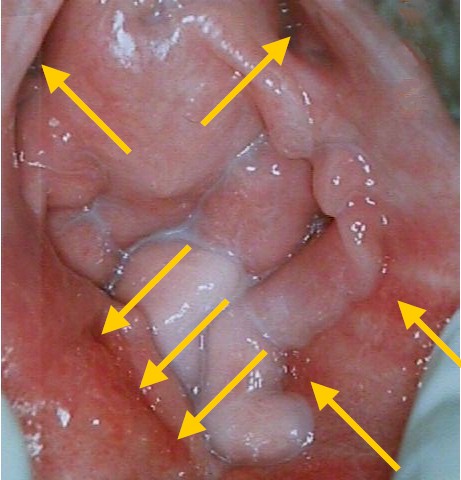|
Vulvar Vestibulitis |

 Vulvar vestibulitis is a condition of uncertain cause, characterized by
pain and burning in specific sites on the vulva.
Vulvar vestibulitis is a condition of uncertain cause, characterized by
pain and burning in specific sites on the vulva.
The pain is most noticeable during intercourse and is very consistent, both in character and location.
The pain and tenderness is distributed in a U-shaped pattern around the introitus and includes the hymeneal remnants and up to 1 cm of skin exterior to the hymen. Visually, the tender areas are reddened and touching them gently with a cotton-tipped applicator will duplicate the pain they experience during intercourse (a positive "Q-Tip Test"). Biopsy of these tender areas will show a generalized inflammatory pattern of non-specific etiology.
Some women with vestibulitis indicate they have always felt this discomfort during intercourse. Others seem to have acquired the condition. They have painless intercourse initially, and later develop the painful intercourse so characteristic of this condition.
The diagnosis is based on the physical examination, with persistent areas of tenderness to touch, located in the U-shaped area surrounding the hymenal ring. Biopsy is neither necessary nor often done.
Treatment is problematic. Antibiotics, anti-fungals, anti-virals, estrogens, and steroids are often used and are often found to be ineffective. Antioxalates (used with the theory that oxalates provoke a skin reaction in this area) are promoted by some, but randomized studies demonstrate them to be no better than placebo.
Several studies have demonstrated the efficacy of surgical excision of the affected area (perineoplasty) in selected cases.